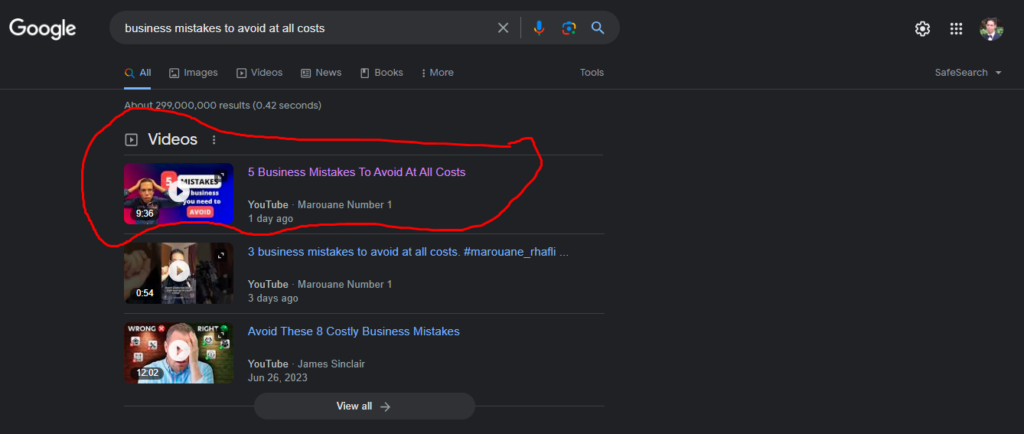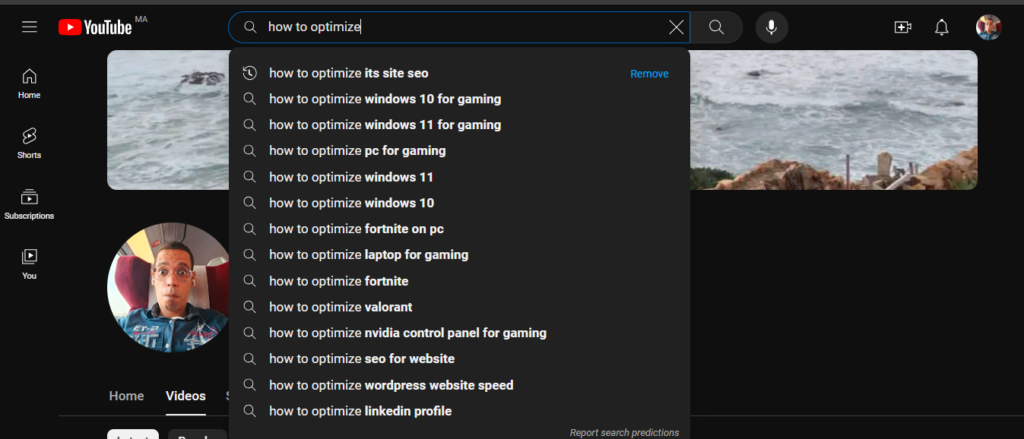
With the advent of mobile and video as the most consumed content on this device, the referencing of videos on YouTube is more than ever a topic in the spirit of the times. We are obviously talking here about natural referencing of these videos, via a set of techniques allowing better positioning in the search results of Youtube and Google. Want to improve and increase the visibility of your videos via SEO? Discover the keys to good SEO on YouTube.
Why is YouTube SEO booming?
Far ahead of Yahoo, Bing and Qwant combined, YouTube is technically the second most used search engine in the world. With 4 billion requests per day, use by 96% of 15-24 year olds and even 78% of 50-64 year olds, YouTube is a social tool that counts in the search landscape:
- First as an autonomous search engine;
- As a content provider within Google Video;
- But also obviously as a content and response aggregator on Google.
Here are examples where good SEO on YouTube has allowed the ecommerce and SEO expert Marouane RHAFLI (me 🙂 ) to rank a video posted just 24hours before, and a short posted just 72 hours before on first page of Google for the keyword (business mistakes to avoid at all costs)

How does YouTube SEO work?
Unique in its power, its size but also its hybrid character (between social network, search engine, media and content producer), YouTube is a real asset for a brand. This is why video SEO has the same prerogatives as traditional SEO:
- SEO optimization of metadata: regarding metadata, things have changed. Until recently, the video tags – necessary for its categorization – went straight to the keywords tag, which had long been set aside by Google. The only Meta tag that can still be optimized today remains the first element crawled by Google, namely the title tag.
- SEO optimization of content: beyond the H1 title (the title of your video, identical on YouTube to your tag), everything happens in the Description field (presentation of the video, word density- keys, linking to your conversion-oriented landing pages, etc.)
- The popularity of the YouTube videos/channel: it is defined by the number of views, likes, number of comments, shares, additions to a playlist, subscriptions, as well as external signals (inbound links external to YouTube, activities on social networks). You will have understood that the audience, the interactions, your publications and the engagement of your community are of paramount importance.
How to have good Youtube SEO using keywords?
Identifying your Youtube keywords is essential to properly reference your videos and also optimize your SEO. But before embarking on SEO optimization of metadata, you must base yourself on user requests related to the subject of the video. Such research will obviously help you optimize SEO for YouTube, but also give you ideas for new topics to produce. This keyword research can be done in several ways:
- On-the-fly keyword suggestion: YouTube itself helps you with your SEO through suggestions in its search bar. A simple and effective way to find long-tail queries searched by Internet users… unfortunately without weighting or diagnosis of opportunities.

- Via keyword suggestion tools: Some SEO keywords research tool have artificial intelligence that takes into account numerous criteria (search volume, relevance, difficulty compared to the competition). Using such a tool for keyword research means relying on finely analyzed data, preventing you from optimizing the SEO of your YouTube video on expressions that are too competitive or too little requested.
How to optimize the visibility of your videos on Youtube?
As in the case of web content, SEO on Youtube is very important if you want to be well referenced and thus increase your audience.
The title and description of an optimized video on YouTube is essential and has the function:
- to inform the user of the content of the video, or even to summarize it, and possibly offer links to related content;
- to semantically qualify it with search engines, which use these elements to associate a video with a query.
The title and description appear in the search results of YouTube and Google Videos, where they play a role as an incentive to click. This is why, as with standard web content, your ability to combine the tricks of SEO for YouTube with a marketing hook risks making the difference.
Good YouTube SEO thanks to a good <title>
Natural Youtube SEO in 2018 has never lived up to its name so well. Also, here is how to optimize the title of your YouTube video, which we remind you, will serve as both <h1> and<title>
- Write explicit titles, which clearly identify the subject of the video.
- Choose a concise title to optimize display in search results (on YouTube, titles are generally truncated from around 70 characters including spaces).
- Place the most descriptive and relevant terms at the beginning of the title.
- We are in the air of voice search; also, do not hesitate to use queries in this sense (“how”, “why”, “what is” etc).
The ropes of an optimized video description for YouTube
The description will play an essential role in the SEO of your video on YouTube. Also, it must first precisely describe the content and provide a link to your site, preferably in the first 100 characters (space characters included) or a little more broadly in the first 243 characters. For what ?
On YouTube: the first 3 lines are the most important: 243 signs (or 3 lines with carriage return) are displayed before having to click on the “More” button.

On Facebook, only the first line will appear: only the first 100 signs of the description of a YouTube video are displayed when sharing it on the famous social network. Please note: this number is subject to change (it was still 156 less than a year ago). In principle, concentrate your optimization and hooking efforts in the first sentences of the video.
Your start of description must contain one or more main keywords, without entering into over-optimization. Hook the Internet user! Do not hesitate to consult these tips for successful writing of web content.
Place a link in the third line to the landing page of your website most related to your YouTube video. Make sure this link appears before the user has to click MORE.
After the MORE, write content of around 100 to 200 words minimum summarizing the idea of your video. You can even complete the statement there. The interest of this text lies in the opportunity to densify the share of keywords in the description of your YouTube video.
Then, optionally place other links to videos on your channel, a subscription link or your other social networks.
YouTube Meta Tags: final key to good SEO
Choosing tags to categorize a video may seem like child’s play, and yet we very regularly notice the same errors. If choosing tags related to your video is the basics of SEO on YouTube, don’t forget these few rules:
- Mix tags specific to your video and more generic tags (“SEO”, “Search engine optimization”, “ecommerce”, “Google ranking”, “SEO expert”)
- Don’t insert too much! Between 5 and 10 is more than enough.
- If the meta keywords tag no longer provides the tags used by a competitor on a video, a quick visit to the source code and a search for the word “keyword” continues to be instructive.





